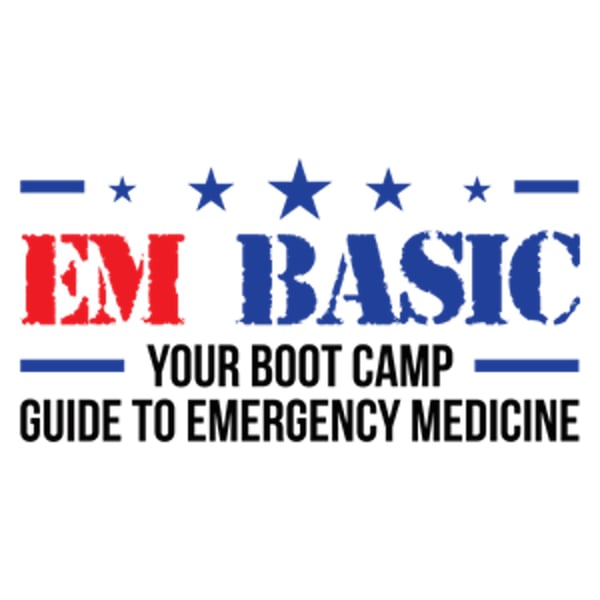EM Basic Essential Evidence- The NEXUS Study
EM Basic
EM Basic LLC
4.6 • 665 Ratings
🗓️ 17 September 2012
⏱️ 9 minutes
🧾️ Download transcript
Summary
This episode will discuss the NEXUS study. NEXUS was a study that studied thousands of patients to validate a set of rules so that we can "clinically clear" patients with possible c-spine injury without getting an x-ray. This study has helped us avoid radiation in certain low-risk patients, saved the cost of x-rays and CT scans, and speed these patients through the ED. We'll talk a lot about the statistical side of this study and how you can apply it in your everyday practice.
Transcript
Click on a timestamp to play from that location
| 0:00.0 | Hey, everybody. This is Steve Carroll for E.M. Basic Essential Evidence. Today, we'll be talking |
| 0:05.6 | about the study behind the famous nexus criteria. This criteria helps us avoid unnecessary C-spine |
| 0:11.6 | imaging in certain patients, and allows us to clinically clear a patient in cervical collar. |
| 0:17.5 | As always, this podcast doesn't represent the views or opinions of the Department of Defense, |
| 0:20.6 | the U.S. Army, or the Ford Hood Post Command. |
| 0:23.1 | So the title of this article is validity of a set of clinical criteria to rule out injury |
| 0:28.7 | to the cervical spine in patients with blunt trauma. |
| 0:31.7 | It was published in New England Journal of Medicine, July 13, 2000, and the first author |
| 0:37.1 | is Jerry Hoffman. So the background. |
| 0:39.7 | So this is a study that defined the nexus clinical decision rule that helps us determine |
| 0:43.9 | whether or not a patient needs imaging of their C-spine after blunt trauma. There are five criteria. |
| 0:49.2 | I remember them with the mnemonic A, B, C, D, E, A is for alter mental status, B is for bony, midline tenderness, |
| 0:57.9 | C is for CMS dysfunction or neurodeficit, D is for drugs or alcohol, and E stands for elsewhere, |
| 1:05.4 | meaning a distracting injury somewhere else besides the spine. So talk about this study design a little |
| 1:10.5 | bit. So this was a |
| 1:11.5 | prospective multi-center observational study. This means that the authors defined a rule ahead of time, |
| 1:17.8 | defined a data collection method ahead of time, then applied it to patients at 21 different hospitals. |
| 1:23.8 | They needed 21 hospitals to participate because C-spine fractures and injuries are rare, so you need |
| 1:29.9 | a large number of patients to capture those few that have fractures. When you're validating a clinical |
| 1:35.1 | rule, you need to make sure that you have enough patients who actually have the disease that you're |
| 1:40.1 | looking for. Otherwise, your results aren't valid. As a little bit of historical context, |
| 1:45.8 | there's nothing magical about these criteria, but they represent a standard set of common-sense |
... |
Please login to see the full transcript.
Disclaimer: The podcast and artwork embedded on this page are from EM Basic LLC, and are the property of its owner and not affiliated with or endorsed by Tapesearch.
Generated transcripts are the property of EM Basic LLC and are distributed freely under the Fair Use doctrine. Transcripts generated by Tapesearch are not guaranteed to be accurate.
Copyright © Tapesearch 2025.

